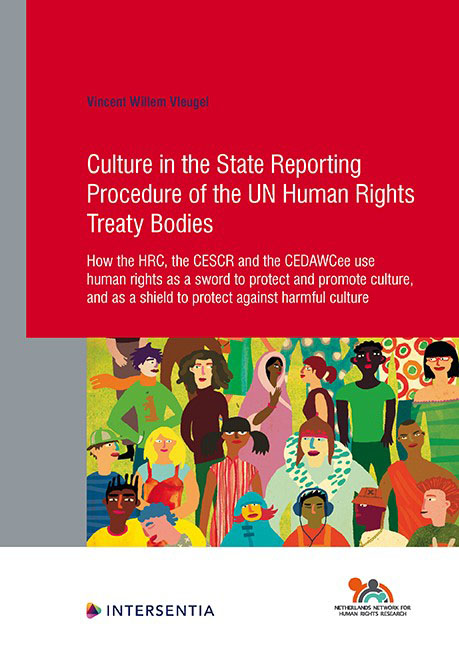 Culture in the State Reporting Procedure of the UN Human Rights Treaty Bodies
Culture in the State Reporting Procedure of the UN Human Rights Treaty Bodies Published online by Cambridge University Press: 11 November 2021
INTRODUCTION
The present chapter examines how the treaty bodies deal with ‘adverse’, ‘negative’ or ‘harmful’ aspects of culture. While chapter 4 examined how States are to respect, protect and promote culture and cultural diversity, chapter 5 examines the obligations of States parties to promote changes in cultures. Cultures can manifest themselves in harmful values (stereotyping, attitudes) and practices (FGM, early marriage, etc.). As such, culture (in the form of practices, customs, traditions) can directly infringe upon human rights, or (in the form of stereotyping, attitudes) it can serve as an obstacle or barrier to the enjoyment of human rights. In order to map and analyse how the treaty bodies approach adverse, negative or harmful aspects of culture, three steps are to be taken. First, it is important to determine which concerns the treaty bodies link to culture. In general, it appears that for all three treaty bodies the vast majority of the issues linked to culture relate to different forms and manifestations of discrimination against women. Other issues relate to sexual and gender identities, such as lesbian, gay, bisexual, transgender and intersex persons (henceforth referred to as LGBT+) and other vulnerable or disadvantaged groups. Step 2 examines how the treaty bodies link these concerns to culture. Is the link clear, explicit and direct? Or is it ambiguous, implicit and indirect? Finally, the related recommendations are examined, with a view to outlining State obligations: are States parties required to address or challenge the culture, and how? If culture is (implicitly or explicitly) identified as contributing to situations of problematic implementation, do States (automatically) have to address that culture? What are the proposed (legal and other) measures or solutions?
It is necessary to address some additional methodological choices here. For one, there is the choice to distinguish between explicit and implicit links to culture. The link with culture is considered explicit when the treaty bodies explicitly – i.e., openly, plainly, unambiguously – link the problem to culture, custom or tradition, or to cultural attitudes, stereotypes or stigma. Such ‘link’ to culture may take many forms. When few women participate in political and public life, and this is ‘perpetuated by’ the persistence of stereotypes, this is a link to culture.
To save this book to your Kindle, first ensure [email protected] is added to your Approved Personal Document E-mail List under your Personal Document Settings on the Manage Your Content and Devices page of your Amazon account. Then enter the ‘name’ part of your Kindle email address below. Find out more about saving to your Kindle.
Note you can select to save to either the @free.kindle.com or @kindle.com variations. ‘@free.kindle.com’ emails are free but can only be saved to your device when it is connected to wi-fi. ‘@kindle.com’ emails can be delivered even when you are not connected to wi-fi, but note that service fees apply.
Find out more about the Kindle Personal Document Service.
To save content items to your account, please confirm that you agree to abide by our usage policies. If this is the first time you use this feature, you will be asked to authorise Cambridge Core to connect with your account. Find out more about saving content to Dropbox.
To save content items to your account, please confirm that you agree to abide by our usage policies. If this is the first time you use this feature, you will be asked to authorise Cambridge Core to connect with your account. Find out more about saving content to Google Drive.